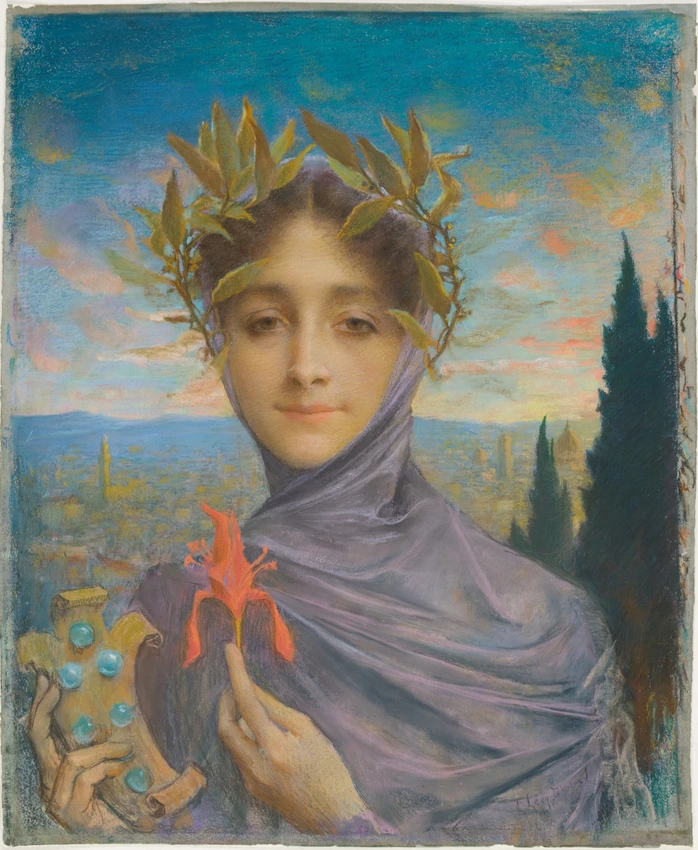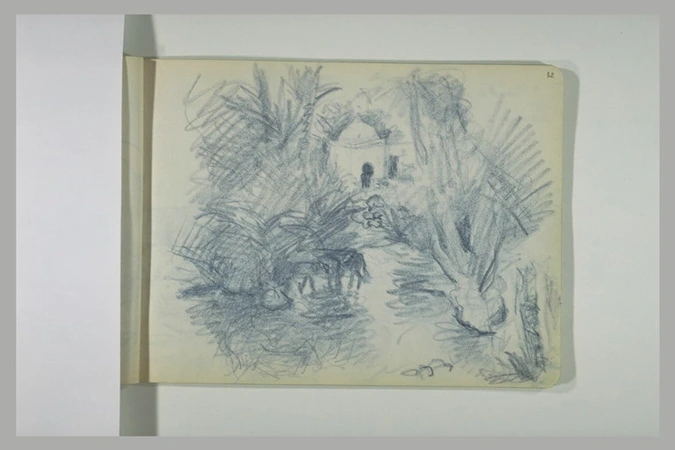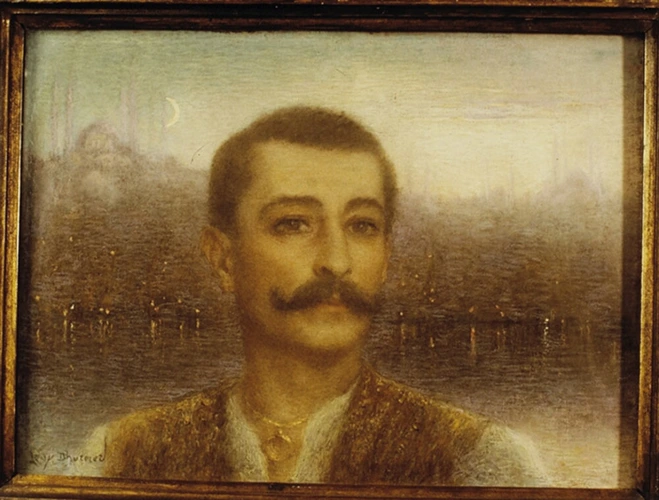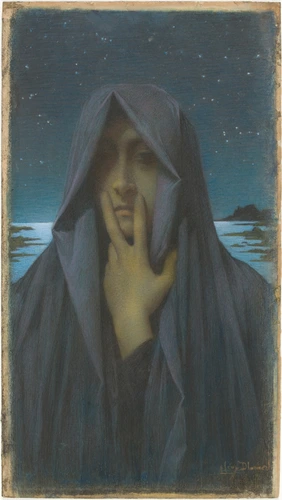Florence
This graceful female figure is clearly a personification of the city of Florence. In one hand, she holds a red lily, the emblem of the Italian city, and in the other, the Medici coat of arms. Moreover, in the background, Lévy-Dhurmer has added a view of the town: to the left, we can recognise the characteristic outline of the Palazzo della Signoria, and to the right, that of the Duomo and the Campanile.
In the last years of the 19th century, Florence had become an essential destination for pilgrims desperate for artistic sensations. This craze was comparable with the tradition of the "Grand Tour", that long trip undertaken in the 17th, and in particular the 18th century, by young people from the upper ranks of European society. It was also linked to the fashion for the Italian Primitive painters and the English Pre-Raphaelites. By portraying Florence as a young woman whose smile is somewhat reminiscent of the Mona Lisa, but more languid, Lévy-Dhurmer fits right into the fin de siècle climate of aestheticism, well suited to his skilful, refined art.
But behind all these references, there is also a portrait: that of Thérèse Vitali (1866-1940), who, in 1888, became Countess Raymond de Beauchamp. By making this woman the embodiment of Florence, Lévy-Dhurmer was certainly referring to her Italian origins, and perhaps to her fondness for a property recently acquired by her father, the Villa Fiorentina in Cannes.
The crown of laurels has a dual symbolism. Firstly, eternity and mourning: in May 1897, Thérèse had narrowly escaped from a dreadful fire at the Bazar de la Charité in which several members of her family perished. The cypress trees in the background remind us of the ever-threatening presence of death. The crown of laurels, traditionally worn by Apollo, also expresses support for the arts. Like the Medici, Thérèse de Beauchamp liked to build: she was known for financing many construction projects throughout her life. Thus, Lévy-Dhurmer has here created a genuine allegorical portrait that transcends the representation of the model's features.








